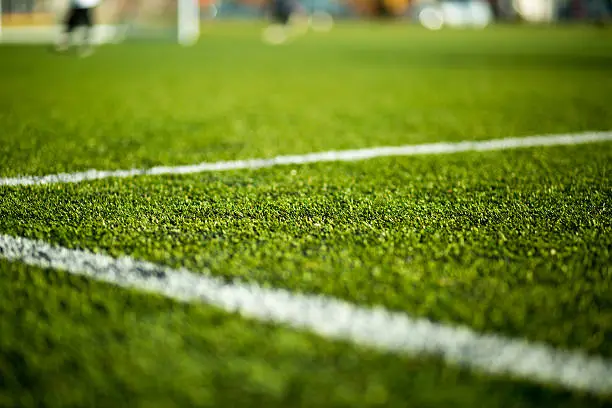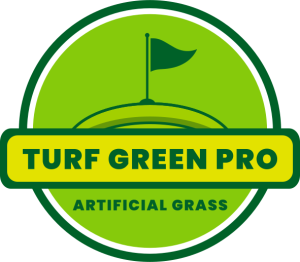How Long Does Artificial Turf Last | Tips for Maximizing Its Lifespan
How long does artificial turf last? This is a common question for both homeowners and businesses who appreciate its low maintenance and evergreen appearance. As a durable and versatile alternative to natural grass, artificial turf offers many benefits, but understanding its lifespan and how to extend it is essential for maximizing your investment. In this article, we’ll discuss the average lifespan of artificial turf, the key factors that impact its longevity, and how to determine when it’s time to replace your synthetic grass.
How Long Does Artificial Turf Last in Dallas?

The lifespan of artificial turf can vary depending on several factors, including climate, usage, and maintenance. On average, high-quality synthetic grass can last anywhere from 10 to 20 years. In cities like Dallas, where the weather can be unpredictable with scorching summers and occasional heavy rains, artificial turf generally falls within the upper end of this range if properly cared for.
At Turf Green Pro, we ensure that our products are made from the highest-quality synthetic turf materials, offering a long-lasting and reliable alternative to natural lawns. The artificial turf lifespan is heavily influenced by factors such as foot traffic, UV exposure, and weather conditions—especially in areas like Dallas. By following proper care and maintenance, you can extend the life of your artificial lawn and continue enjoying a lush, green space year-round.
Factors Affecting Artificial Turf Lifespan

Several key elements determine how long your artificial turf will last. Let’s break them down:
1. Quality of Materials
The durability of synthetic grass depends largely on the quality of the materials used. Higher-quality turf products, like those offered by Turf Green Pro, are made from UV-resistant fibers designed to withstand harsh weather conditions and daily wear and tear. Turf with a sturdy backing and strong seams will offer greater longevity compared to cheaper options.
2. Installation Quality
Improper installation can shorten the life of your artificial turf. A well-prepared base, proper drainage, and tight seams are essential for preventing issues like wrinkling or water buildup. When installed by professionals, such as the expert team at Turf Green Pro, your artificial grass is guaranteed to last longer and maintain its appearance.
3. Weather Conditions
Weather impacts on artificial grass are significant, especially in extreme climates. In Dallas, high temperatures and intense UV exposure can degrade the fibers of low-quality turf over time. However, products with UV stabilization technology, like those we offer, can withstand the sun’s rays and resist fading. Regular rainfall, while beneficial for natural grass, can sometimes lead to drainage issues if the turf isn’t installed correctly. Good drainage systems help prevent this and increase the longevity of your turf.
4. Foot Traffic
Areas with heavy foot traffic, such as playgrounds, sports fields, or high-use residential areas, will experience more wear and tear. Turf that experiences minimal traffic can last much longer. However, even high-traffic turf can be made more durable with routine upkeep.
5. Artificial Turf Warranties
Many artificial turf products come with warranties that cover a certain period, often between 8 to 15 years. A good warranty ensures that your investment is protected for an extended period, which is a testament to the artificial turf’s durability. At Turf Green Pro, we offer warranties that guarantee long-term performance, so you can rest assured that your turf is built to last.
How Do You Know When It’s Time to Replace Your Artificial Turf?
Even though artificial turf installation is designed to be long-lasting, it won’t last forever. So, how do you know when it’s time to replace your artificial turf? Here are some signs to watch out for:
1. Fading and Discoloration
One of the first signs that your artificial grass might need replacing is noticeable fading. While high-quality turf is UV-resistant, long-term exposure to the sun can eventually cause the color to fade. If your once-vibrant turf looks dull or worn out, it may be time for a replacement.
2. Damage to the Turf Backing
The backing of your artificial turf holds everything together. If it starts to deteriorate or separate from the synthetic grass fibers, your turf will lose its structure and stability. Once the backing shows signs of wear, it’s difficult to repair, and replacement may be necessary.
3. Matting and Flattening
Over time, especially in high-traffic areas, artificial grass fibers can become matted or flattened. Regular brushing can help revive flattened turf, but when it no longer springs back to life, you may need to consider replacing it. Proper maintenance can extend the turf replacement timeline, but eventually, even the best-kept turf will show signs of wear.
4. Drainage Issues
Poor drainage can cause water to pool on your turf, leading to mold or mildew growth. If your turf isn’t draining correctly and routine maintenance doesn’t resolve the issue, it may be a sign that the base or turf itself needs to be replaced.
5. Artificial Lawn Durability Comparison
If your artificial lawn looks more worn out compared to similar installations around your neighborhood, it’s a clear sign that it’s nearing the end of its lifespan. In such cases, replacement will be necessary to maintain your yard’s appearance and functionality.
Artificial Grass Care Tips for Longevity
Proper care and maintenance are key to extending the lifespan of your artificial turf. Here are a few tips to keep it in top condition:
- Routine Cleaning: Regularly remove debris like leaves and twigs, and rinse your turf with water to prevent dust buildup.
- Brushing: Use a stiff brush to fluff up matted areas, particularly in spots with heavy foot traffic.
- Avoid Heat Damage: Keep hot objects like grills or fire pits away from the turf to prevent melting.
- Monitor Drainage: Ensure your turf’s drainage system is functioning correctly, especially after heavy rainfall.
By following these simple maintenance steps, you can extend the life of your artificial lawn and enjoy the benefits of your investment for many years.
Conclusion
The lifespan of artificial turf can vary widely depending on factors such as the type of turf, quality of materials, installation practices, and environmental conditions. On average, artificial turf can last between 8 to 15 years, with high-quality and luxury options often reaching the upper end of this range or beyond. Understanding how elements like Texas’s extreme heat, UV exposure, and humidity affect the turf, along with adhering to proper installation and maintenance practices, plays a crucial role in extending its life.
FAQs
How Long Does Artificial Turf Typically Last?
Artificial turf typically lasts between 8 to 15 years. The exact lifespan depends on factors such as the quality of the materials, the type of turf, installation practices, and environmental conditions.
What Factors Affect The Lifespan Of Artificial Turf?
Several factors can affect the lifespan of artificial turf, including the quality of the materials, UV exposure, heat and temperature extremes, humidity levels, and the amount of foot traffic or usage. Proper installation and regular maintenance also play a crucial role in extending the turf’s life.
Does The Type Of Artificial Turf Impact Its Longevity?
Yes, the type of artificial turf can significantly impact its longevity. For example, luxury turf, which is made from higher-quality materials and features advanced UV resistance and other premium characteristics, generally lasts longer than standard turf. High-density turf also offers better durability compared to lower-density options.
How Does Texas Climate Affect The Lifespan Of Artificial Turf?
In Texas, the intense heat, strong UV radiation, and occasional humidity can accelerate the wear and tear on artificial turf. High temperatures can cause thermal stress, UV exposure can lead to fading, and humidity can promote mold or mildew growth if drainage is inadequate. Choosing high-quality turf and implementing proper maintenance practices can help mitigate these effects.
What Maintenance Is Required To Extend The Life Of Artificial Turf?
Regular maintenance is essential for extending the life of artificial turf. This includes brushing the turf to keep fibers upright, rinsing it to remove debris and pet waste, and addressing any signs of damage promptly. Infill material may also need to be replenished over time to maintain turf resilience and appearance.
